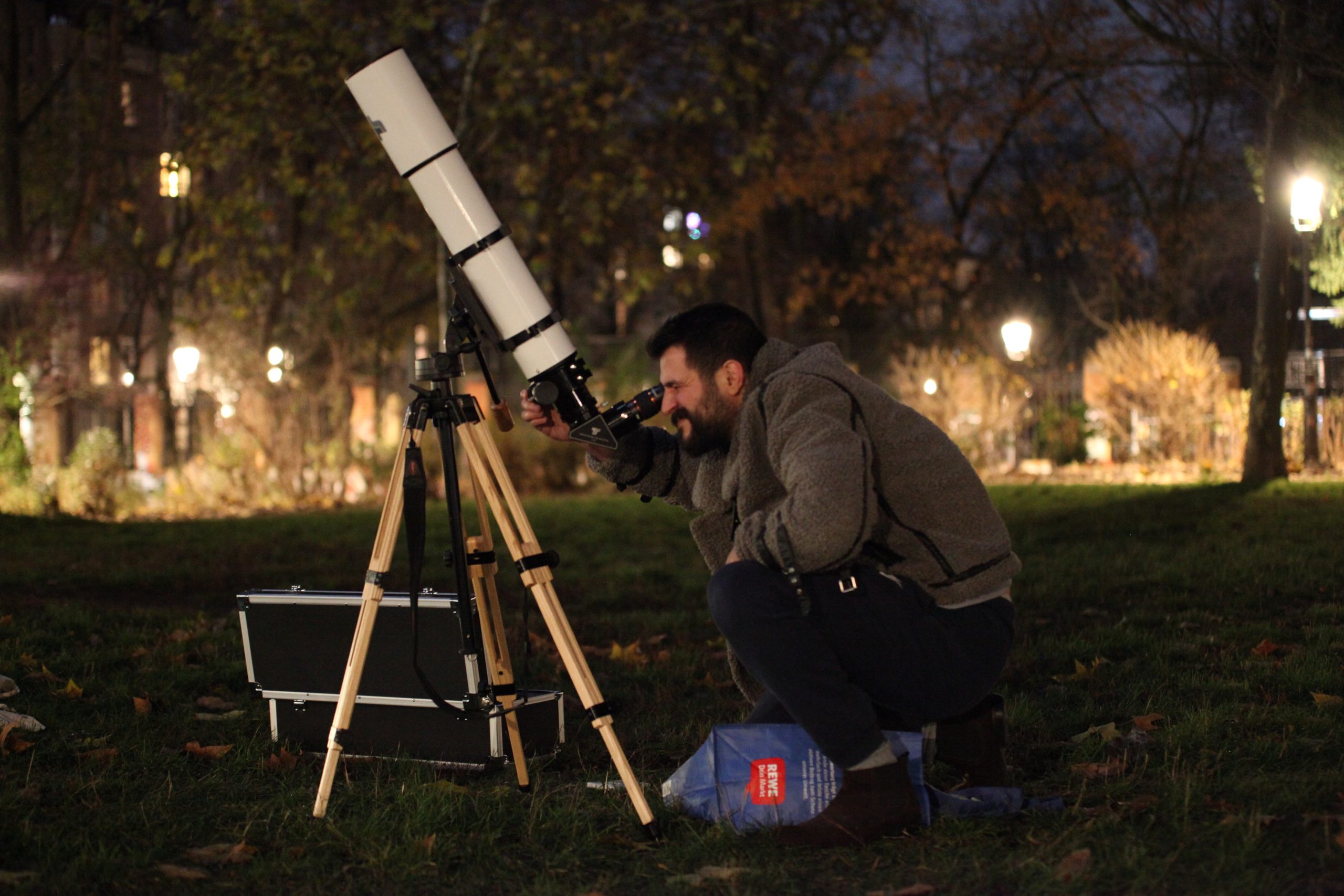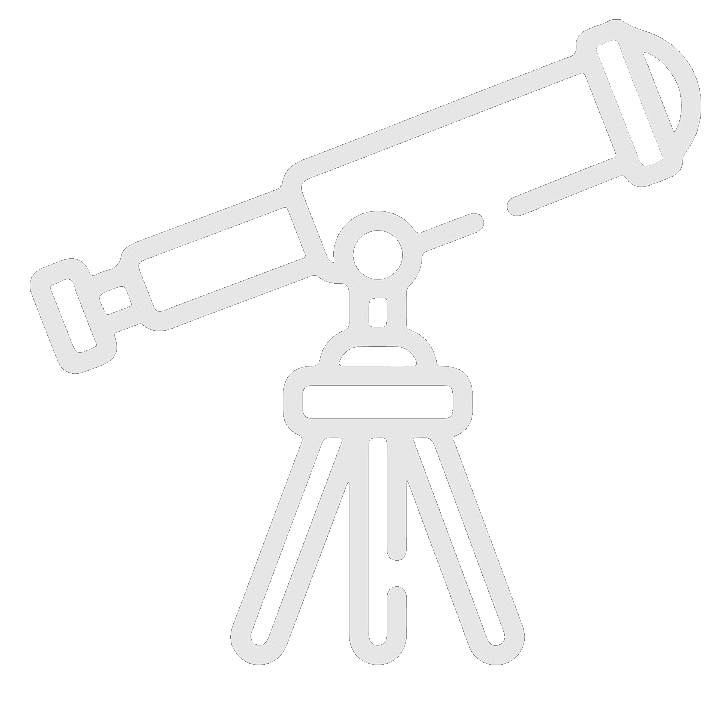Many photos courtesy of Mark Johnston. Check him out here!
From the hotel in La Sirena, we hop into the van and ascend the foothills. The slope increases, and next we turn onto a local road. I look down at my notebook and scribble for a few minutes. I look up again. The mountains surround us. There’s 34 kilometers to Tololo, but this part of the drive will take more than an hour. The van passes under a telephone wire. Yellow parrots are perched above.
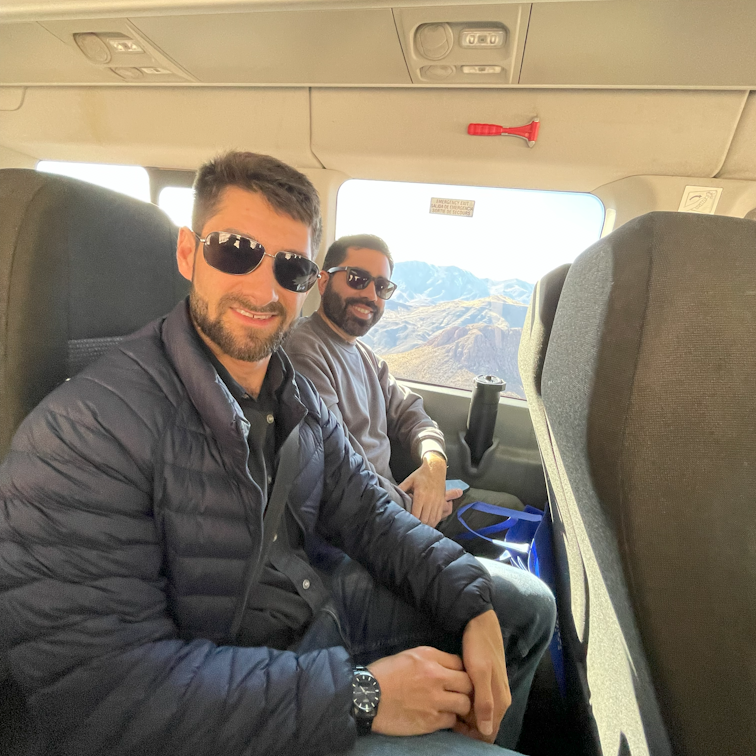
Out the window, up the slope, I gaze over an infinity of cacti. Mountains fill the whole horizon, jutting straight up.
We reach the gate to the facility. AURA (Association of Universities for Research in Astronomy) bought the land in 1962 – 32000 hectares – and then surveyed for the best mountaintops. Not every peak is ideal for building roads and a foundation on top of. Today, we’ll visit Gemini South, SOAR, Vera C Rubin and CTIO, atop modest peaks of 2700 meters.
Conversation dims as we approach. The domes grow bigger and taller as we climb, until the spherical shield of gemini subtends the full view out the window. We tip and tilt in the mild Gforces as we take the hairpin turns.
On a snow capped mountain top, sunburn can start in less than 5 minutes. The driver opens the van’s sliding door. We hop out onto the gravel parking lot. We’re here. I can’t believe it.
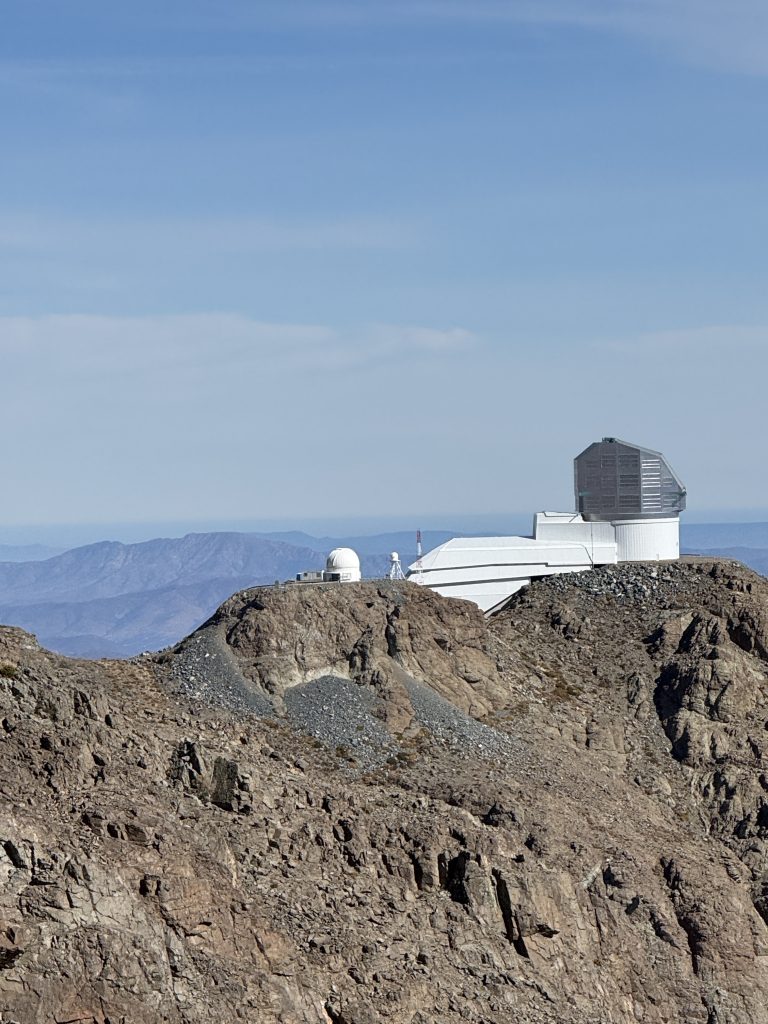
The Vera C Rubin Observatory published its first light photographs last week. It has a 3.2 Gigapixel camera, the largest in the world. It is a wide field instrument. One picture contains 10 million galaxies. The observatory is named after the astronomer who discovered dark matter ( https://en.wikipedia.org/wiki/Vera_Rubin). It can scan the entire southern sky every three days, perfect for spotting changes like asteroids and supernovae.
The building also has an imposing and polygonal structure. Why? Every telescope must fight wind and turbulence at the mountaintop. Swirling, turbulent air means a blurry picture. Think of the air that rises off your hot grill in the summer. At the microscopic level, the atmosphere always looks like that, enough to disturb the image in a telescope. The structure is built to guarantee smooth, laminar flow of air across the observatory. It is, uniquely, not a dome. Will all new observatories look like this?
In the locker rooms, we are issued hard hats and safety vets. The observatory is still an active construction site. We ride one set of elevators, turn right down a hallway, and then up another. The catwalk access to the telescope lies on the 8th floor.
The mammoth machine lay docile in the center of the room. The walls extend up forever, and the ceiling is not easily seen. The guide offers to spin the telescope so that we may see the mirror. The engines whir up, and the Rubin turns to face us. I’m reminded of a ferrari revving its engine at the red light – these motors are massively precise and powerful.
I can’t sell this observatory the way they can. Go over to their website! It’s got hours of photos, facts, lesson plans for teachers, and more.
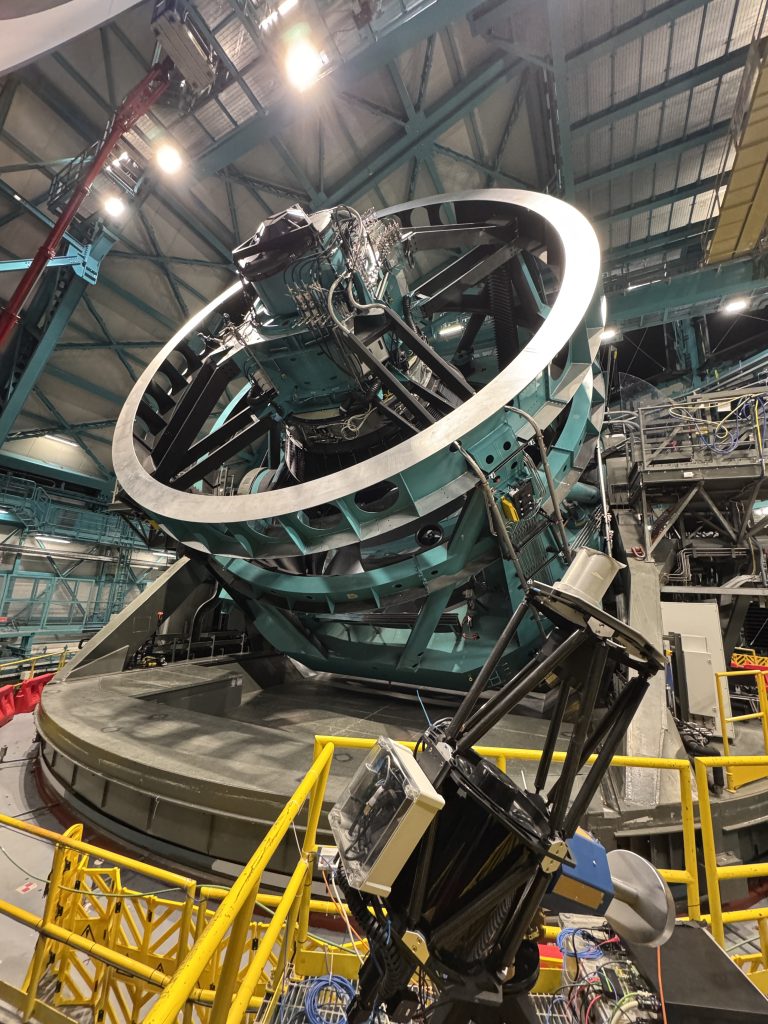
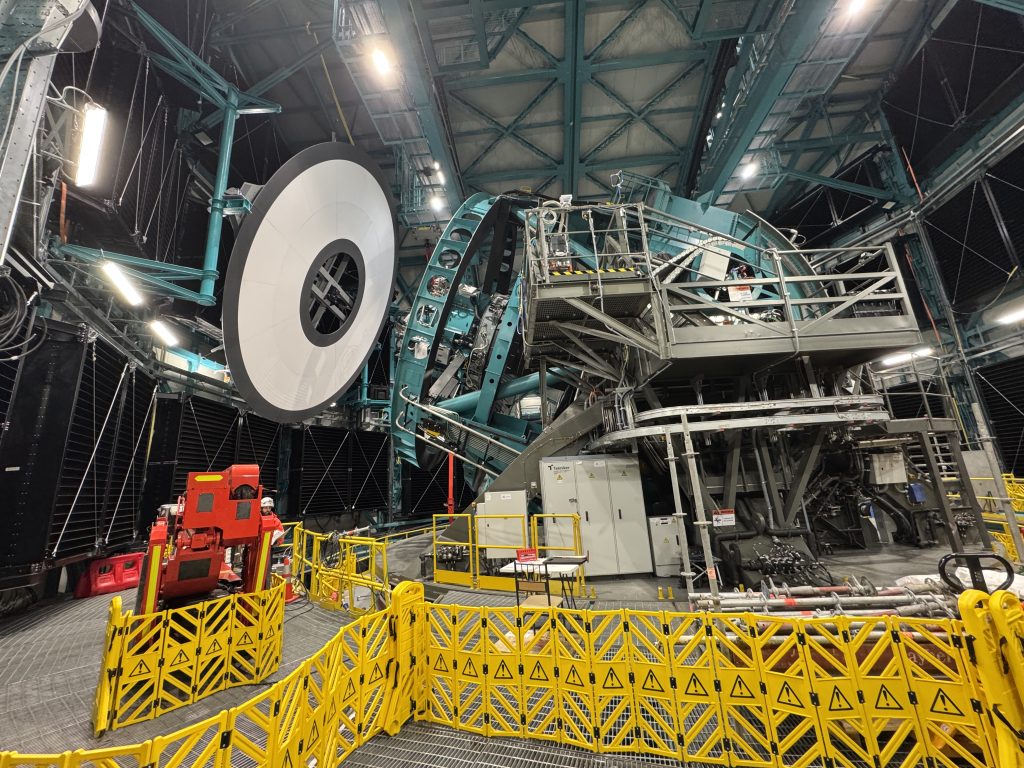
We huddle together under the aperture for a picture, but I wonder about something. They said they are preparing for more tests tonight. Is it not time consuming for them to stop their work so that we can take pictures? I ask the site manager, she simply smiles at me without a reply!
After the photo op, I notice a man on a walkway way above. “What’s he doing?”
“He’s fixing a leak on the roof.”
“Where’s the water coming from?”
“It’s ice.”
It doesn’t matter if it’s your apartment or a billion dollar telescope, we’re all equal under mother nature. The roof still leaks.
We conclude our visit, admire the building one more time from the parking lot, and drive over to the lodging. This is on the peak of Cerro Tololo, another summit within the AURA property. This is where the technicians stay as they work in shifts.
Low, strawlike grass covers the mountaintop. The lodging is a small, single story building, with doors to the rooms external, like a motel. A canteen in the center serves as our social space. It was built by an Illinois contractor in the 1960s, and there are many signs of this.
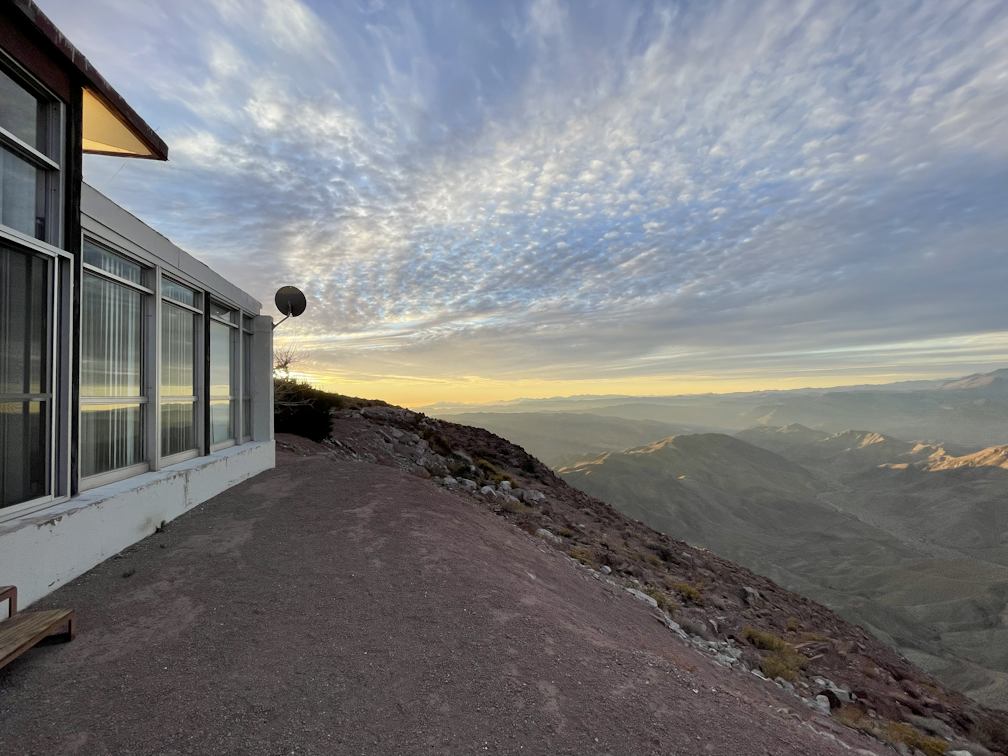
The rooms are fully carpeted with beige. A desk phone and an alarm clock adorn the desk. All the furniture is solid wood, mid century, with swooping curves. I bend over to charge my phone and find… US outlets! Did these architects from Illinois not know that Chile has a different socket and voltage? That would also explain the lamps – wooden bases and hemp lampshades, imported from another place and another era. I drop my things and head for the mess hall.
The northwest wall of the canteen was a window top to bottom. Did you know that the mountains turn purple at sunset? In that final fading light, at 2000 meters, perched above the horizon, there is another color beyond red. It lasts only a moment, then the sun pops below the horizon, and the mountains revert to their unanimated pastel greens and browns.
Amy asks “Does anyone have a problem with their eyes drying?” It’s the middle of the desert.
“I don’t have problems i have products. Do you need eyedrops?” Moisés retorts.
After dinner, we hop in the facility vehicles to drive up the Slope to Celle Tololo International Observatory. Although the walk would only be 10 minutes, we drive. There have been many accidents where astronomers fall off the edge in the dark. We drive cautiously, but without headlamps. The blinking hazard lamps are enough, more than enough.
I observe the ghostly silhouette of the car glide up the mountainside. We see the eyes and ears of the car in front of us. The inversion of colors defies expectations, it seems as if we are looking at the front of the car. Here, nothing is done the way it normally is. We must change our habits to minimize the light.
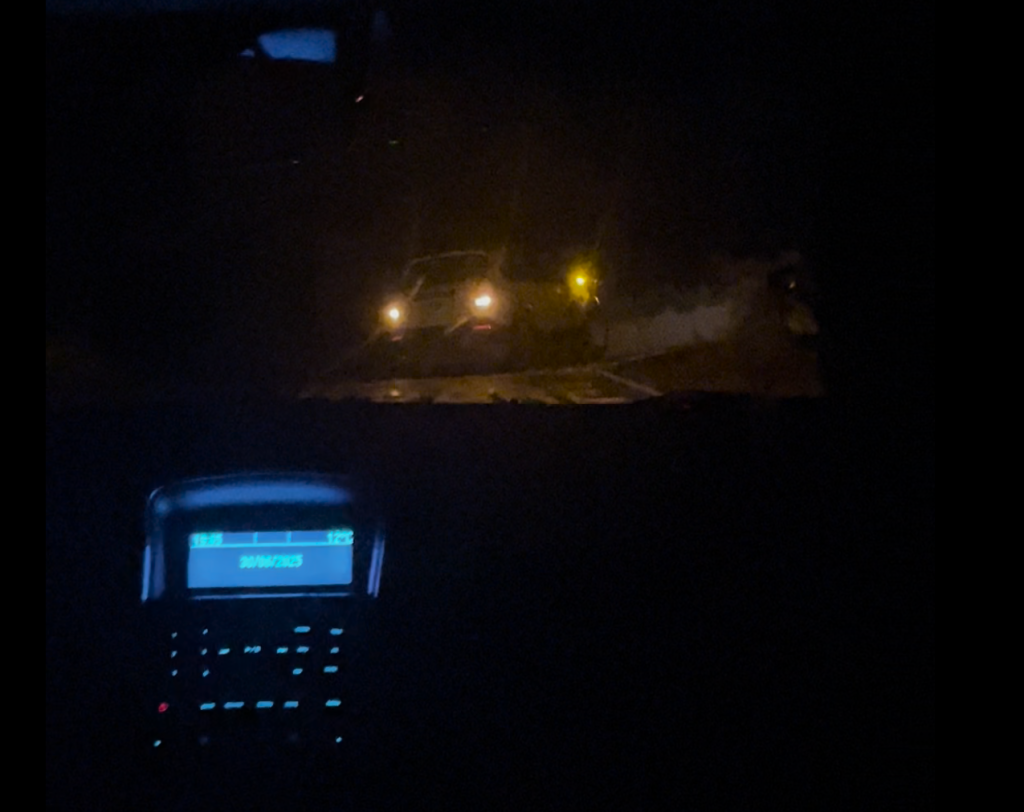
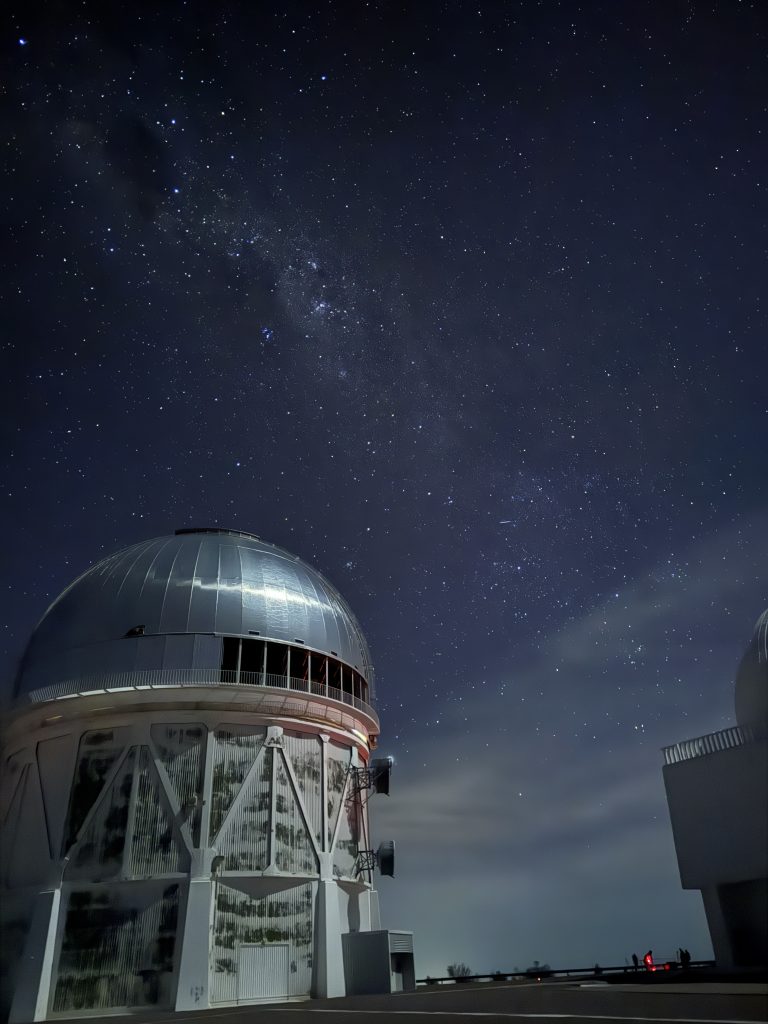
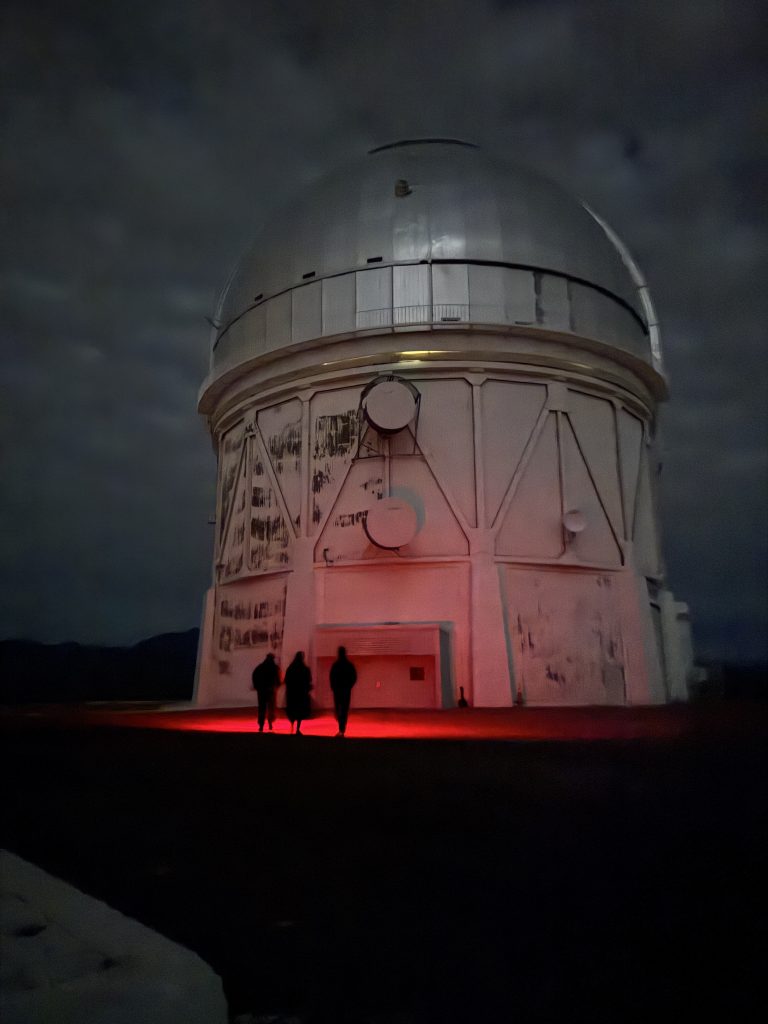
At the foot of the Blanco telescope, I feel that I stand before a colossus. This is not an observatory but the head of giant creature, sleeping. At any moment, it could reach long lanky arms out of the summit and emerge from the ground.
We walk inside. The Blanco telescope is 50 years old, and is operated by a skeleton crew. There are 20 employees, including the night shift. Still, its operators are burning with passion. The telescope publishes 300 papers per year, double what the Gemini telescope does. In 2011, the nobel prize was awarded to astronomers who discovered the universe is expanding at an accelerating rate. Much of the data from their discovery came from the Blanco Telescope.
The engineer is so proud of this fact, he does a little dance with his feet. The Blanco telescope has a 4 meter mirror, no adaptive optics – “Why is it more productive than the Gemini?”
“I believe it is because we are dedicated. We spend lots of time in the day maintaining the telescope. Even if there are no incident reports from the night before, we check them again and again.”
We expected a 15 minute walkthrough of the control room. But it’s cloudy tonight – one of only 50 days a year. A cloudy night means we can see more of the building, go up and visit the telescope.
“I can show you many of the small secrets of this device” the engineer says.
“I want to know the secret of the electric sockets” You might wonder why I’d care about a silly detail. But the toolbox tells the story.
“ We use US outlets because the facility is old all the technology was imported from the United States. This includes, most importantly, the clock drive for the telescope. It runs on 60 hz frequency – if you connect the motor to Chilean electricity, it will run at 50 hz, too slow to synchronize to the earth’s rotation. So the Chilean electricity is converted to the US standard by a substation building.”
The whole facility was built around this choice. All electronics are imported from the US, even today. I look above the control panel- yes, even the pencil sharpeners.
We call the elevator up to the dome. I spot a gadget hanging on the wall and ask “what’s that?” “I’m not sure, maybe my dad knows, he worked here for 30 years”
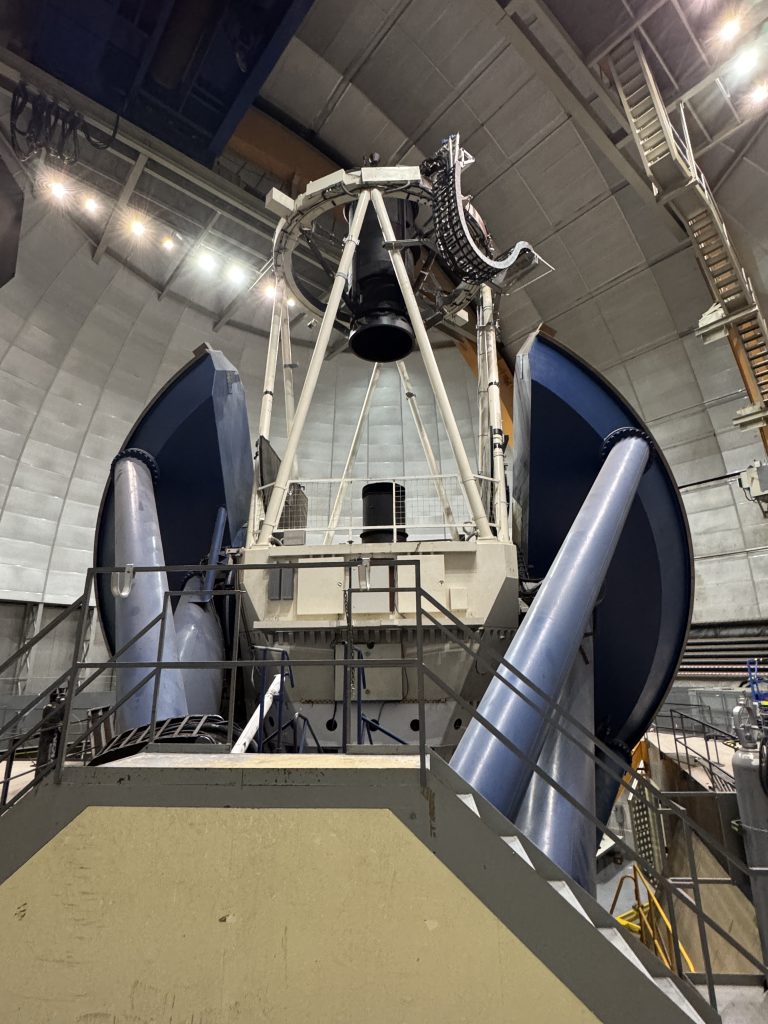
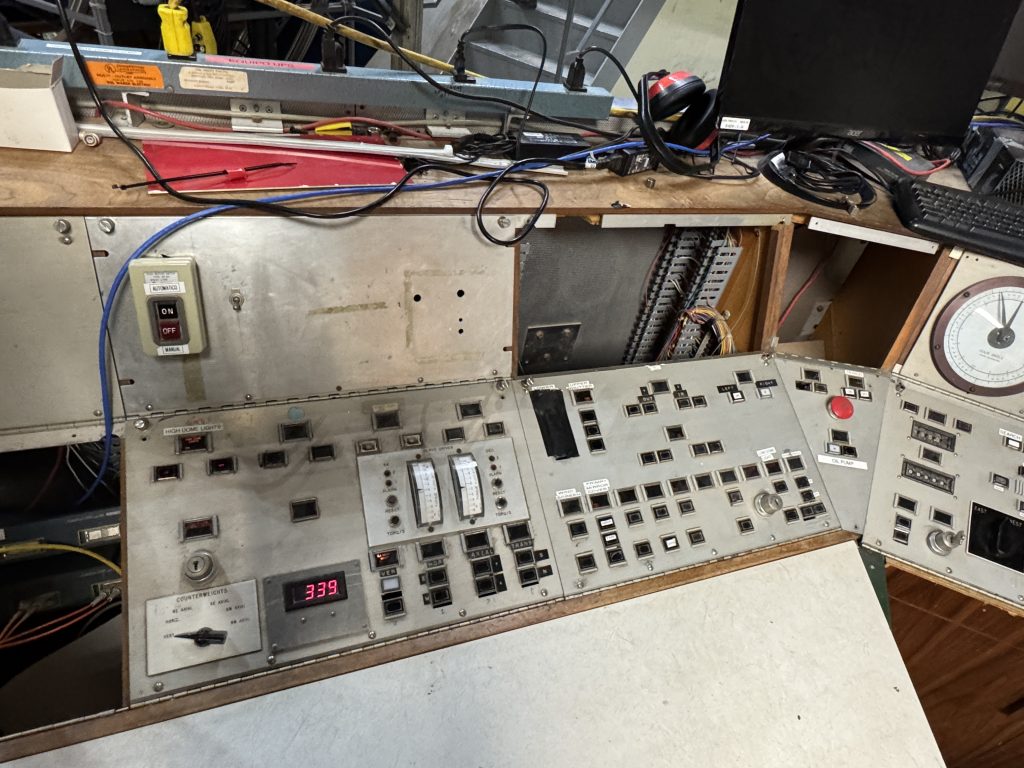
The elevator climbs patiently, then opens onto a carpeted platform, which leads to the control area. The control area overlooks a lower floor inside the dome, two stories below. There’s a large blue tank sitting to the side of the telescope. it looks like a huge furnace. Railroad tracks lead from underneath it to the bottom of the telescope. This is the coating chamber for the mirror. Telescope mirrors are glass with a microscopic layer of aluminum or silver on top. In the harsh desert environment, the coating degrades, so it must be recoated every few years. The primary mirror weighs 100 tons, so this is a very sensitive operation. Every telescope has its own coating chamber where the mirror is reborn.
15 years ago, the Blanco telescope was upgraded with DECam, a .67 Gigapixel camera, at the time, the largest in the world. Its purpose was to search for Dark Energy, and immensely expanded our knowledge of this topic.
The engineer directs us to the other side of the walkway, while he stands at the controls. We march along on the catwalk, 180 degrees around the edge of the dome, yielding a a full panoramic view of the instrument.
The engineer pulls a lever, I feel a tug to the left, and the entire telescope rotates patiently and effortlessly clockwise. He throws the lever in the opposite direction, and I feel a tug to the right. Then I realize, the telescope is stationary. We’re the ones moving. He’s spinning the dome with us on it.
We walk underneath the mount to a small service room. A massive, smooth steel wheel cuts through the ceiling. It’s the bearing for the telescope, which spins to track the motion of the sky. This machine is so well balanced, so perfectly constructed and maintained, that it requires a motor only the size of a fist to spin it.
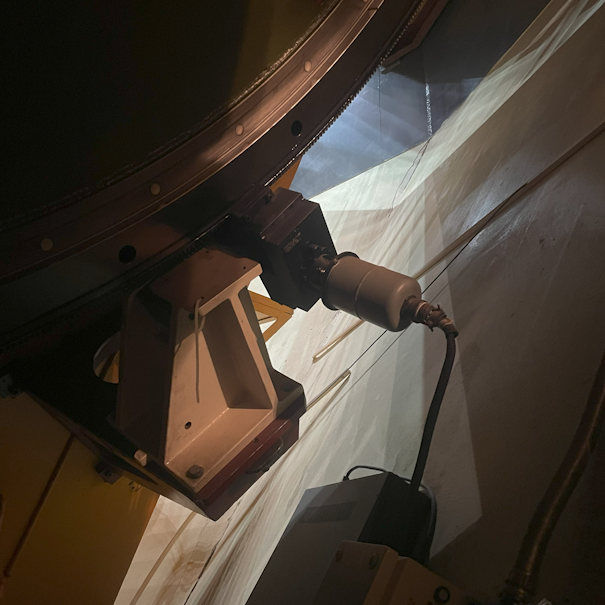
As the engineer said, this telescope runs on passion.
When Vera C Rubin is fully operational, the other telescopes on this mountain will play a support role. Rubin can scan the sky and look for brand new things like supernovae and asteroids, but this telescope will run the followup, and zoom in on details. CTIO and Vera Rubin need new funding to work together like this.
The engineer takes us down into the basement for one final secret. He opens a door at the end of a storage room to reveal an even larger storage room, this one with a high ceiling. He shines his flashlight on the wall – it’s a basketball hoop. Here, they once played ball with Neil Degrasse Tyson.
